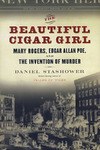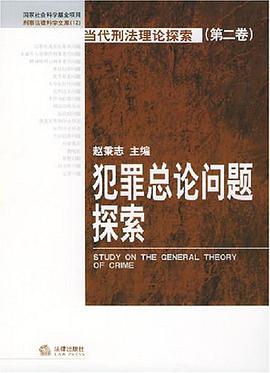

具體描述
The author of Edgar winner Teller of Tales now recounts the story of Manhattan tobacco store clerk Mary Rogers, a mysterious beauty whose posse of admirers made her a minor celebrity in 1841 in various newspapers' society pages. The discovery that year of her mutilated corpse fueled a public outcry and a newspaper circulation war, as well as a fictional magazine serial by Edgar Allan Poe featuring his famous detective Dupin speculating on the murder of working-class Parisian "Marie Rogêt." Poe rightly deduced that Mary wasn't a victim of the gang violence that plagued New York City in the absence of an effective police presence. But he came late to the accepted theory that Mary had died of a botched abortion and had to tweak his final installment to maintain his and Dupin's reputations. Although Stashower's account bogs down in comparisons of Poe's revisions of the Rogêt manuscript, it's a generally absorbing account of the birth of the modern detective story. The sordid details of Mary Rogers's stunted life pale in comparison with Poe's own love-starved childhood, self-destructive tidal wave of alcoholism, poverty and rants against publishers and rivals; Poe's genius and literary legacy are hauntingly drawn here. (Oct. 5)
Copyright © Reed Business Information, a division of Reed Elsevier Inc. All rights reserved.
The death of Mary Rogers remains one of the great unsolved murders in American history. The bruised and beaten body of the 20-year-old woman was discovered in the Hudson River along the Hoboken, N.J., shoreline on July 28, 1841. A cord wrapped around her throat, her torn clothing, and marks resembling a man's thumb on her neck convinced authorities that she was the victim of a violent assault. Within hours, New York's newspapers erupted in an explosion of lurid speculation and sexual sensationalism.
A host of suspects was rounded up over the ensuing months, including two suitors, but no one was ever convicted of the crime. A year later, a dying and delirious innkeeper claimed that Rogers had perished from a botched abortion at her establishment. Her son had disposed of the body. Although the innkeeper's confession was riddled with inconsistencies, her story became the standard explanation, primarily because it served as the inspiration for Edgar Allan Poe's "The Mystery of Marie Rogêt."
Poe was the offspring of actors, abandoned by his father and adopted by the wealthy Allan family of Richmond, Va. Poe's volatile personality and his adoptive father's strict mores generated more than a few heated conflicts; they ultimately culminated in Poe's disinheritance. Poe proved to be his own worst enemy, dropping out of the University of Virginia and West Point. These and other failures were shaped in part by his repeated battles with alcoholism. Even when his writing career started to ascend, this pattern of self-destruction continually appeared, costing him many friends and numerous opportunities. To make matters worse, he married his 13-year-old cousin, whom he adored; in short time, she contracted tuberculosis. Her slow, agonizing death only deepened Poe's depression. In the midst of all this, he exploited the frenzy surrounding Rogers's death by attempting to solve her murder in a three-part article in Ladies' Companion during the winter of 1842-43.
Daniel Stashower, the author of an acclaimed biography of Arthur Conan Doyle, uses Rogers and Poe to weave a compelling narrative of antebellum New York. Although the two protagonists never knew each other, their lives and postmortem histories intersected in surprising ways. Rogers worked in John Anderson's cigar emporium, a place popular with numerous writers and journalists who worked nearby along Nassau and Ann Streets. Here Rogers interacted with Poe's literary associates, writers from the penny press, flash weeklies and sporting papers. Most important, she became their object of affection and admiration. She might even be considered America's first sex symbol. Antebellum America had no pin-ups, popular striptease shows or mass pornography. Instead, cigar girls, confectionary workers and other attractive salesgirls served as the objects of the prurient male gaze. As the Herald newspaper pointed out, "Mary Rogers's face was well known to all 'young men about town.' "
Stashower deftly combines his talents as a novelist, mystery writer and biographer in The Beautiful Cigar Girl. Yet many of the larger themes surrounding the lives of Poe and Rogers are well-known to Poe aficionados and antebellum historians. Scholars and more curious readers will also be frustrated by the absence of endnotes identifying the sources of the many provocative quotes.
Stashower nevertheless demonstrates how Poe and Rogers shared more than just an unsolved murder mystery. As the historian and literary critic David Reynolds has shown, the penny press generated lascivious and gruesome images of sexuality and crime during the 1830s and '40s. Such stereotypes influenced many writers: not only Poe but also Herman Melville, Nathaniel Hawthorne, James Fenimore Cooper, Emily Dickinson and others associated with America's 19th-century literary renaissance. Stashower clarifies even more precisely how Poe's effort to "solve" the murder of Rogers was directly influenced by the mud-slinging and half-truths propagated by the popular media of the era. Much of "The Mystery of Marie Rogêt" was a direct response to the spurious and sometimes fantastic theories invented by the penny press to explain Rogers's violent demise.
The stories of Poe and Rogers offer a vivid counterpoint to an America frequently defined by manifest destiny and economic "progress." Both characters embody the commonplace tragedies of their era. Each of their families fell victim to the Panic of 1837, a six-year depression that represented the worst economic calamity up to that point in American history. Each one had talent -- Poe as a writer, Rogers as an "intense and irresistible" beauty. Both migrated to New York in hopes of resuscitating their finances. Each lived along Gotham's economic precipice, hovering over an abyss of abject poverty. Each died young. Downward mobility and personal misfortune were ordinary experiences in 19th-century America, with literary accolades and celebrity status affording little protection.
Reviewed by Timothy J. Gilfoyle
Copyright 2006, The Washington Post. All Rights Reserved.
Mystery novelist Stashower, who won a nonfiction Edgar for Teller of Tales (1999), a biography of Sir Arthur Conan Doyle, returns to his historical roots in this examination of a celebrated murder in 1840s New York City that turned Edgar Allan Poe into an amateur sleuth. The text ably weaves the story of a young woman, celebrated for her beauty and her untimely death, with that of Poe, whose poems and stories often celebrated the deaths of young, beautiful women. Mary Rogers worked behind the counter of a cigar store in Manhattan in 1841; she was so beautiful that the store was jammed with her admirers. On July 28, 1831, three days after Rogers had gone missing, her body was found floating in the Hudson. The press seized on her murder, but the New York police force (depicted by Stashower as completely disorganized) failed to find her killer. One year later, Poe (just after the success of his detective Dupin in "The Murders in the Rue Morgue") proposed to his publisher that he investigate this famous cold case. Although Stashower works a bit hard to invest this murder with multiple levels of significance, it remains an intriguing story, one that sheds considerable light on the snares of a big city for a young woman. Expect this book to attract readers who were entranced by The Devil in the White City (2003), another account of crime in the nineteenth century. Connie Fletcher
Copyright © American Library Association. All rights reserved
Masterfully researched, marvelously conceived, and passionately written. -- Caleb Carr
著者簡介
圖書目錄
讀後感
評分
評分
評分
評分
用戶評價
相關圖書
本站所有內容均為互聯網搜索引擎提供的公開搜索信息,本站不存儲任何數據與內容,任何內容與數據均與本站無關,如有需要請聯繫相關搜索引擎包括但不限於百度,google,bing,sogou 等
© 2026 book.quotespace.org All Rights Reserved. 小美書屋 版权所有




















